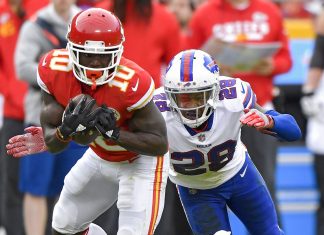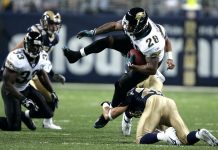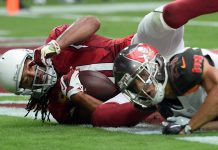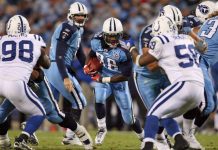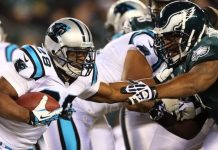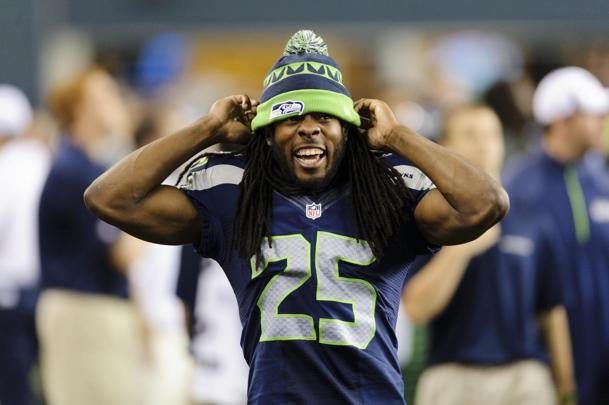The NFL of the 1990s was a different animal than it is today, which explains at least somewhat the creation under Paul Tagliabue’s watch of something laughably called the Mild Traumatic Brain Injury Committee.
What is harder to explain is why Tagliabue put a rheumatologist with no expertise in head injuries in charge of the panel. Or why, in 1994, the then-NFL commissioner claimed the number of concussions in the NFL was relatively small and that the problem of head injuries was “one of those pack journalism issues.’’
Tagliabue was on the wrong side of what would become the biggest issue facing the league. He remained there most of his tenure as the NFL fought – at times bitterly – the idea that football was causing former players to suffer, and some to die.
And now he’s going into the Pro Football Hall of Fame. A special committee voted to put him there as part of an NFL centennial class of 15, though it took some doing. Tagliabue retired in 2006 and on four previous occasions was rejected by sports writers and broadcasters on the regular ballot.
That he’s going in now won’t be cause for celebration among those who fought the league for so long for justice. The argument could be made – make that should be made – that Tagliabue’s part – on the behest of NFL owners, of course – in fighting brain injury claims prevented players from getting necessary treatment and their survivors from getting proper compensation.
And that doesn’t sit well with those on the front line in the fight for brain health.
“It feels like this is a moment of forgiveness from the NFL to Tagliabue,’’ said Chris Nowinski, the co-founder and CEO of the Concussion Legacy Foundation. “I think we’re all expected to forgive him, but there’s certainly a lot of families affected by this who don’t.’’
Tagliabue, of course, wasn’t alone. The commissioner’s job is to do the bidding of NFL owners, and their mission was to preserve the golden goose when it could have easily been cooked.
And, to be completely fair to Tagliabue, brain research has come a long way in the last quarter-century or so.
Still, the risks were identifiable at the time. Players were getting their heads beaten in, even as Tagliabue and the NFL tried to minimize it.
Tagliabue was in charge when Steve Young – also in the Hall of Fame – retired in 1999 because he feared repeated concussions would scramble his brain. In Young’s last game he was knocked unconsciousness, and laid motionless on the field for 30 seconds in a scary scene that demanded action from someone.
Another Hall of Famer, Troy Aikman, still can’t remember the 1994 NFC title game when he was he was knocked from the game after a head hit.
“They say once you have one (a concussion), the chances of it occurring again are greater. But I don’t worry about it. … It’s part of playing the game,” Aikman said two days later, while preparing to lead Dallas to a 30-13 Super Bowl win over Buffalo.
Players were getting concussed on Tagliabue’s watch, and it wasn’t pretty. Even worse was the response in creating a sham committee with an oxymoronic name, and blaming the media for making too much of hits to the head..
It’s something Tagliabue said later he regretted.
“Bottom line, it sounded like I was shooting the messenger, which was the concussion issue,’’ Tagliabue said in 2017, the last time he was up for the Hall of Fame. “My intention at the time was to make a point which could have been made fairly simply: That there was a need for better data. There was a need for more reliable information about concussions and uniformity in terms of how they were being defined in terms of severity.”
Tagliabue retired in 2006, two years after the MTBI committee published a paper saying the NFL’s concussion problem was not major, citing figures that showed half of all concussed players returned to action a day later. Another committee paper that same year said that while boxers and other athletes had brain damage from hits to the head, there was no evidence that NFL players suffered any.
More years would pass until the NFL finally caved in to growing pressure and agreed to a $765 million fund in 2013 to help former players and their families deal with brain damage.
Tagliabue was wrong on the biggest issue of his term, and it cost some former players dearly. That won’t be erased by his induction in the Hall of Fame, but it will always be measured when it comes to debating his tenure.
And from a business side, what a tenure it was.
Tagliabue kept labor peace for 17 years, added two expansion teams and presided over the completion of 20 new or remodeled stadiums. He expanded pro football to Europe, negotiated huge TV deals and made his employers billions of dollars in increased values for their franchises.
“I think when you look back at his career, he brought it into the modern era and not only from a business standpoint,’’ current commissioner Roger Goodell said. “He understood how a community and the NFL have to operate together ultimately.”
So now Tagliabue will have a bust in Canton for all to see. He’ll be enshrined with the greats of the game, including some who played – and suffered – under his watch.
It’s a tribute to his steady leadership on a number of issues, even if he failed at the one that was most important for the health of the players.
Yes, he was doing the bidding of NFL owners, who ultimately bear the most responsibility. But Tagliabue should have found a way to be better than that.
Hopefully when people see his bust they’ll be reminded of that, too.
—
Tim Dahlberg is a national sports columnist for The Associated Press. Write to him at tdahlbergap.org or http://twitter.com/timdahlberg
25% Bonus via Western Union



